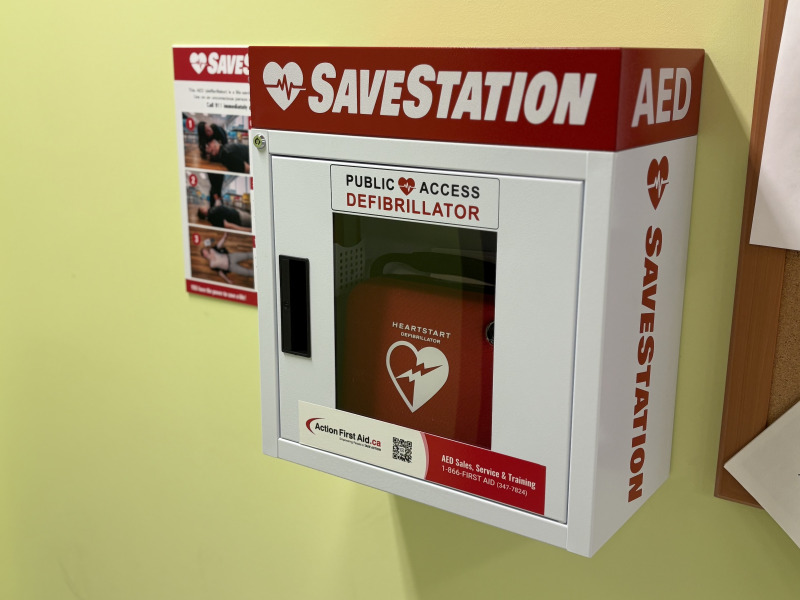Campus safety enhanced with the installation of life-saving AEDs

UPEI has taken a major step in enhancing campus safety with the installation of 18 new automated external defibrillators (AEDs), ensuring that all buildings now have at least one of the life-saving devices in case of a medical emergency. This brings the number of AEDs on the campus to 35.
AEDs are designed to treat sudden cardiac arrest by analyzing heart rhythms and delivering a shock, if necessary, to restore a normal heartbeat. When used in combination with CPR, AEDs can increase survival rates by over 75 per cent.
While CPR should ideally be performed by trained individuals, AEDs are designed for use by anyone in an emergency. They include built-in voice prompts and step-by-step instructions, making them accessible even to bystanders with no medical background. To help users become more familiar with how the devices work, a map of AED locations and instructional videos are available on the Health, Safety, and Environment (HSE) intranet page. AED locations are also listed in the UPEI Safe App under the “Campus Maps” section.
In addition to fixed AED units, Security Services maintains two mobile kits for rapid response. Additional mobile AEDs are stationed in the announcer buildings at Alumni Canada Games Place and the Artificial Turf Field, which are considered higher-risk areas due to the level of physical activity. During athletic and other events, designated individuals are responsible for transporting these AED units from the buildings to the emergency location, such as a soccer field.
All of UPEI’s AEDs are registered with the PEI AED Registry Program, a voluntary online database that plays a critical role in emergency response. Island EMS and Medacom Atlantic’s 911 dispatch centre use this registry to locate the nearest available AED during a cardiac emergency. If someone calls 911 to report a suspected cardiac arrest, dispatchers will direct the caller—or someone nearby—to retrieve the closest defibrillator. They will also provide instructions over the phone on how to use the device until paramedics arrive.
“This initiative reflects UPEI’s strong commitment to creating a safe and responsive campus environment. In emergencies where every second counts, having immediate access to AEDs can make the difference between life and death,” said Liz Rostant MacArthur, manager of UPEI Health, Safety, and Environment. “By equipping all buildings with these devices—and ensuring their locations are easy to find and well-communicated—UPEI is helping to empower the campus community to take swift action when it matters most.”
At a Glance:
- 35 AEDs now installed across campus
- At least one AED in every campus building
- Two or more units in larger or high-traffic buildings
- Two mobile AEDs used by Security Services
- Mobile AEDs in the announcer buildings at Alumni Canada Games Place and the Artificial Turf Field